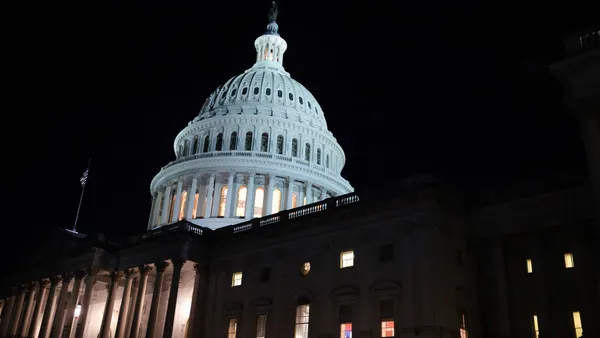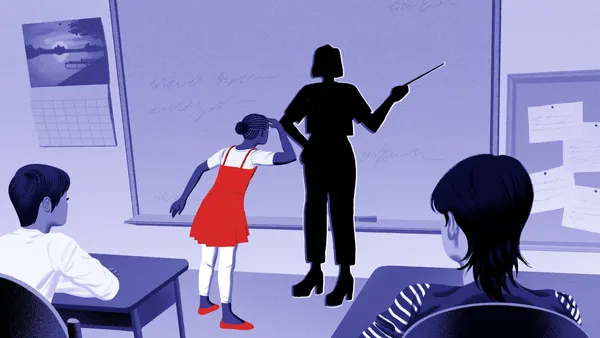Dive Brief:
- Persistent, nationwide special educator shortages may require targeted state and local policy responses, according to a report released last week by the Brookings Institution.
- The Washington, D.C. think tank used data from seven states — Hawaii, Indiana, Massachusetts, Pennsylvania, Texas, Virginia and Washington — and determined that patterns of attrition vary, both among states and across different settings within states. The report’s authors concluded that special educator staffing challenges are “highly context-specific.”
- Overall, the Brookings report found that special education teacher attrition rates "increased considerably" across almost every state in the two school years after the COVID-19 pandemic. The attrition, however, "varied substantially across states,” with Virginia consistently showing the highest rates and Pennsylvania the lowest.
Dive Insight:
Some 45 states reported special education teacher shortages in the 2023-24 school year, according to a Learning Policy Institute study from July that Brookings cited. A separate report from the U.S. Department of Education’s Institute of Education Sciences found that during the 2021-22 school year, special education vacancies were about twice as likely as vacancies for other teaching positions.
To compensate for the shortages and reverse these trends, education experts have been exploring various recruitment and retention solutions. Brookings pointed to a March study from the Learning Policy Institute outlining approaches from four states that included salary increases, residency programs, and support and mentoring efforts.
The Brookings report suggested that taking a one-size-fits-all approach to solving the special educator shortage is not an effective solution. That’s in part because attrition from the workforce was only one reason for the shortage, and in part because the reason for attrition from the workforce varied substantially from state to state.
The report noted three general types of special education teacher turnover: attrition from the workforce, changing to general education teaching positions; and moving to a special education teaching position at a different school.
In Indiana, Massachusetts and Texas, for example, Brookings said “large proportions of special education teachers move into general education teaching positions each year.” While these teachers are not “lost to the system,” initiatives designed to keep special education teachers in special education should be factored in, the authors said.
Meanwhile, states with high overall turnover rates, such as Texas and Virginia, need “immediate, universal interventions to keep more special education teachers in their positions,” the report said, citing initiatives such as Texas’s recently passed House Bill 2 and Virginia’s Roadmap for Special Education.
At the same time, Brookings said states like Pennsylvania that have large gaps in turnover rates based on school poverty levels or urban density might need policies specifically targeting special education teachers.
The report noted that while efforts from the School District of Philadelphia and the Pennsylvania Training and Technical Assistance Network were underway, “these efforts do not target specific school contexts associated with the higher levels of turnover.”
In Hawaii, however, large statewide bonuses for special education teachers helped fill those positions with certified teachers who previously taught general education and lowered movement of special education teachers into general education, Brookings said. But the report also said the policy was not enough to substantially reduce general special educator attrition.
In Hawaii, "simply paying special education teachers more is not enough to compensate for the more challenging working conditions many of these educators face,” Brookings said. “The state likely needs to address these working conditions in addition to providing financial incentives.”















